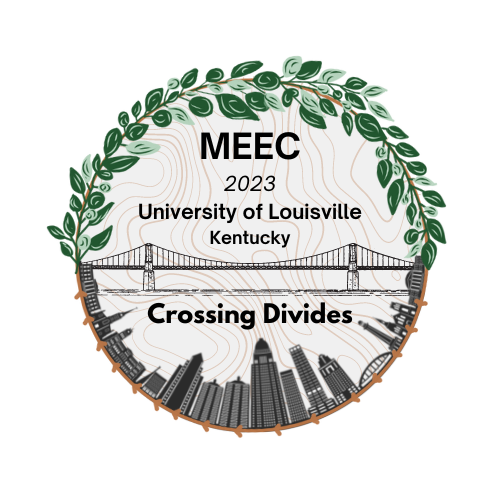Submission Type
Oral Presentation
Abstract
Kleptoparasites do not directly parasitize their hosts but instead steal food and resources, reducing host fitness. Like direct parasites, kleptoparasites can be highly dependent on their hosts such that their evolutionary histories may be linked. Here, we study the evolution of a kleptoparasitic wasp genus, Synergus (Hymenoptera: Cynipidae: Synergini), in relation to their hosts, oak gall wasps (Hymenoptera: Cynipidae: Cynipini). Ovipositing oak gall wasps induce the formation of galls on oaks (Fagaceae) that provide food and shelter to one or more developing gall wasps. Galls induced by different gall wasp species are diverse in size, shape, color, and location on the host tree, and tend to be specific to just one or a few oak tree species. Synergus, and other kleptoparasites, exploit galls by ovipositing into the developing gall and inducing the development of a secondary gall chamber. Synergus larva feed on the gall tissue, sometimes reducing food available to the oak gall wasp larva to the extent that the host dies. We ask how the ecology of gall wasps has affected the diversification of Synergus. We compare the topologies of Synergus and gall wasp phylogenetic trees and detect a significant signal of cophylogeny that appears limited to only a few interactions. We use traits of oak galls to describe the ecological niche for each Synergus species and reconstruct ecological traits of ancestral nodes. We find that ecological changes have been common across the evolutionary history of Synergus, with many transitions among different gall morphologies, gall site, and tree host.
Included in
Entomology Commons, Integrative Biology Commons, Other Ecology and Evolutionary Biology Commons
Evolution of a genus of gall wasp kleptoparasites
Kleptoparasites do not directly parasitize their hosts but instead steal food and resources, reducing host fitness. Like direct parasites, kleptoparasites can be highly dependent on their hosts such that their evolutionary histories may be linked. Here, we study the evolution of a kleptoparasitic wasp genus, Synergus (Hymenoptera: Cynipidae: Synergini), in relation to their hosts, oak gall wasps (Hymenoptera: Cynipidae: Cynipini). Ovipositing oak gall wasps induce the formation of galls on oaks (Fagaceae) that provide food and shelter to one or more developing gall wasps. Galls induced by different gall wasp species are diverse in size, shape, color, and location on the host tree, and tend to be specific to just one or a few oak tree species. Synergus, and other kleptoparasites, exploit galls by ovipositing into the developing gall and inducing the development of a secondary gall chamber. Synergus larva feed on the gall tissue, sometimes reducing food available to the oak gall wasp larva to the extent that the host dies. We ask how the ecology of gall wasps has affected the diversification of Synergus. We compare the topologies of Synergus and gall wasp phylogenetic trees and detect a significant signal of cophylogeny that appears limited to only a few interactions. We use traits of oak galls to describe the ecological niche for each Synergus species and reconstruct ecological traits of ancestral nodes. We find that ecological changes have been common across the evolutionary history of Synergus, with many transitions among different gall morphologies, gall site, and tree host.



Comments
Anna K.G. Ward1, Y. Miles Zhang2, Sofia I. Sheikh1, Andrew A. Forbes1
1Department of Biology, University of Iowa
2University of Edinburgh